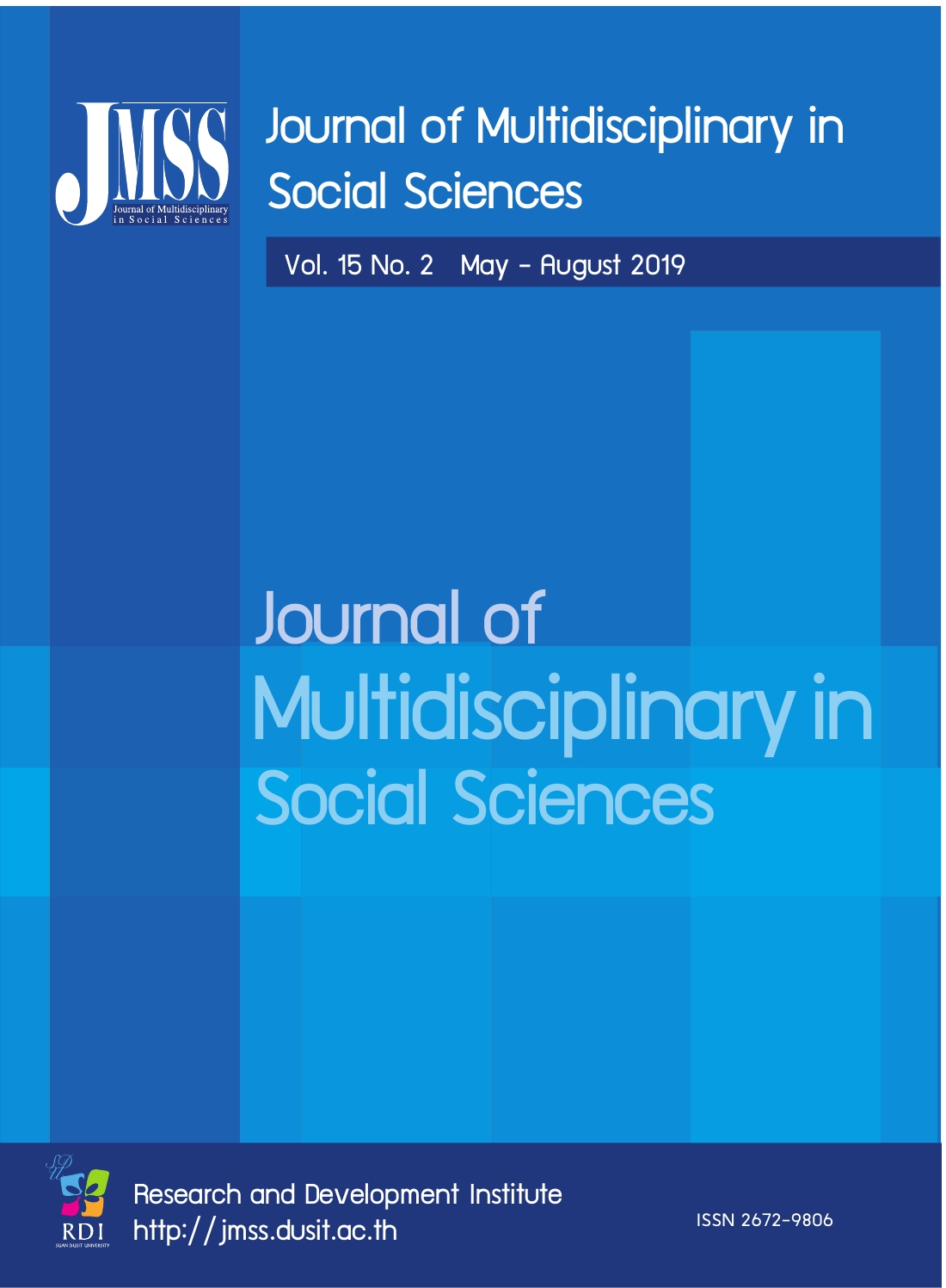Model of Participatory Integration of Student Supervisory System
Keywords:
Participatory Integration, Student Supervisory System, Secondary EducationAbstract
This research aims 1) to study operation factors of participatory integration of student supervisory system and 2) to study the two approaches of participatory integration of student supervisory system by applying qualitative research which consists of interview, observation and analysis of the obtained data. This research found that 1) the operation factors of student supervisory system relates to external factors, including the policies of the Ministry of Education, Office of the Basic Education Commission, the executives of educational institutions, external authorities and organizations, and the support from external authorities in relation to direct educational service and student development. In addition, the internal factors, including personnel responsibility of student supervisory system service provision, such as skills, knowledge and personalities of such personnel, and the roles and duties of the parties concerning the operation of student supervisory system are also important for the operation. 2) The results found that the student supervisory system can be operated in two models as follows: (1) driven by the teachers and executives in an integrated manner of the whole school, and (2) driven by the lead teachers through the support of external authority network. In this regard, the
operation of student supervisory system should be carried out with an awareness of the context of schools which is an important variable in application of the guideline of the operation of student supervisory system.
References
Abe, I. I., & Mason, R. B. (2016). The role of individual interpersonal relationships on work performance in the South African retail sector. Problems and Perspectives in Management, 14(2), 192-200.
Ahmed, S., & Walker, C. (2018). School Shootings so Far in 2018. Retrieved March 10, 2018, from https://edition.cnn.com/2018/03/02/us/school-shootings-2018-listtrnd/ index.html
Carrell, S. E., & Hoekstra, M. (2014). Are School Counselors an Effective Education Input?. Economics Letters, 125(1), 66-69.
Chutithamwong, C. (2011). A social network analysis of stakeholders in student caring systems: Mixed-method research (Master’s thesis). Bangkok: Chulalongkorn University.
Dhamotharan, M. (2009). Handbook on integrated community development- Seven D approach to community capacity
development. Retrieved November 13, 2018, from https://www.apo-tokyo.org/00e-books/AG-21_APO_
ICD_Manual/AG-21_APO_ICD_Manual.pdf
Gaur, M., & Ebrahimi, N. (2013). Understanding workplace relationships- With special reference to superior-subordinate relationship- An important dimension having impact on the success, growth and performance of the employees and organization. International Journal of
Research and Development- A Management Review, 2(2), 7-12.
Hargreaves, A., & Fullan, M. (2013). The power of professional capital. JSD, 34(3), 36-39.
Kariuki, S. M., Abubakar, A., Kombe, M., Kazungu, M., Odhiambo, R., Stein, A., & Newton, C. R. (2017). Burden, Risk Factors, and Comorbidities of Behavioural and Emotional Problems in Kenyan Children: A Population-Based Study. Lancet Psychiatry, 4(2), 136-145.
Khrueachan, N. (2008). An analysis of stakeholders’ roles in schools’ student support systems for aggressive students (Master’s thesis). Bangkok: Chulalongkorn University
Kittipichai., W., & Nanthamongkolchai, S. (2012). The globalized future of the modern Thai family and children. In Bangkok, Family Health. Bangkok: Department of Family Health.
Kouetan, K., & Tandud, K. (personal communication, January 18, 2018)
Leighninger, M., & Niedergang, M. (1995). Education: How can schools and communities work together to meet
the challenge? A Guide for involving community members in public dialogue and problem-solving. Retrieved May 30, 2018, from https://digitalcommons. unomaha.edu/cgi/viewcontent.cgi?article=1035& context=slcepartnerships
Loongkarkdee, N. (personal communication, January 18, 2018)
Masathienwong, C. (2006). Future-oriented educational policies and strategies for Thai youths (Doctor’s dissertation). Bangkok: Chulalongkorn University.
Mississippi Department of Education. (2004). Getting the parents, school, and community involvement guide.
Retrieved May 29, 2018, from https://files.eric.ed.gov/fulltext/ED486620.pdf.
Moonkum, K. (personal communication, November 13, 2017)
National Statistical Office. (2015). Income per Household 2015. Bangkok: Ministry of Information and Communication
Technology.
Office of the Basic Education Commission. (2009). Students care system. Bangkok: n.p.
Padmore, J. (2016). The mental health needs of children & young people: Guiding you to key issues and practices
in CAMHS. Maidenhead: McGraw-Hill Education.
Patricia, O. (2015). Improving interpersonal relationship in workplaces. Journal of Research & Method in
Education, 5(6), 115-125.
Phannarat, N., Wangrangsimakul, K., & Pipatpen, M. (2009). The problems of withdrawal of the youths receiving
scholarship from world vision foundation of Thailand in Songkhla province. Princess of Naradhiwas University
Journal, 1(3), 130-144.
Smith, D. D. (2010). Emotional and Behavioral Disorders: Causes and Prevention. Retrieved March 20, 2018,
from https://www.education.com/reference/article/ emotional-behavioral-disorders-prevention/
Solheim, O. J., Rege, M., & McTigue, E. (2017). Study protocol: “Two Teachers” A randomized controlled trial investigating individual and complementary effects of teacher-student ratio in literacy instruction and professional development for teachers. International
Journal of Educational Research, 86, 122-130.
Stoetzer, U. (2010). Interpersonal relationships at work. Sweden: Stockholm.
WHO. (2013). Comprehensive mental health action plan 2013-2020. Retrieved February 10, 2017, from http://apps.
who.int/gb/ebwha/pdf_files/WHA66/A66_R8-en.pdf?ua=1.
WHO. (2017). Child and adolescent mental health. Retrieved February 10, 2017, from http://www.who.int/mental_ health/maternal-child/child_adolescent/en/.
World Bank. (1999). Community participation in education: What do we know?. Retrieved May 29, 2018, from http:// siteresources.worldbank.org/INTISPMA/Resources/ 383704-1153333441931/14064_Community_Participation_
in_Education.doc.
Downloads
Published
How to Cite
Issue
Section
License

This work is licensed under a Creative Commons Attribution-NonCommercial-NoDerivatives 4.0 International License.








